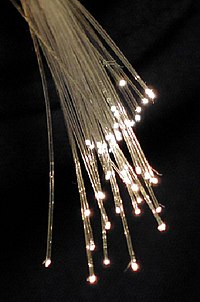
Photo from wikipedia
ABSTRACT Low-emittance (low-E) glass is an energy-efficient glass product which can reduce heat loss by reflecting most infrared radiation. Great benefit in energy savings has made low-E glass manufacturing an… Click to show full abstract
ABSTRACT Low-emittance (low-E) glass is an energy-efficient glass product which can reduce heat loss by reflecting most infrared radiation. Great benefit in energy savings has made low-E glass manufacturing an important sector of the glass industry. In the manufacturing process, optical profiles collected on the surface of products are widely available quality measurements. However, the current quality inspection scheme uses simple summaries of the optical profile data and may not perform well in detecting changes. This study considers monitoring of optical profiles directly and develops a methodology for Phase I analysis of such data. The proposed method uses a piecewise polynomial random-coefficient model to characterize optical profiles and a T2 control chart to monitor estimates of random effects in each piece. A procedure to segment the profiles is provided. We also investigate the problem caused by high correlations of random effects and propose a remedy based on regressor transformation. The numerical study and case study show that the proposed method is suitable for the data and able to identify outlying profiles.
Journal Title: Journal of Quality Technology
Year Published: 2018
Link to full text (if available)
Share on Social Media: Sign Up to like & get
recommendations!